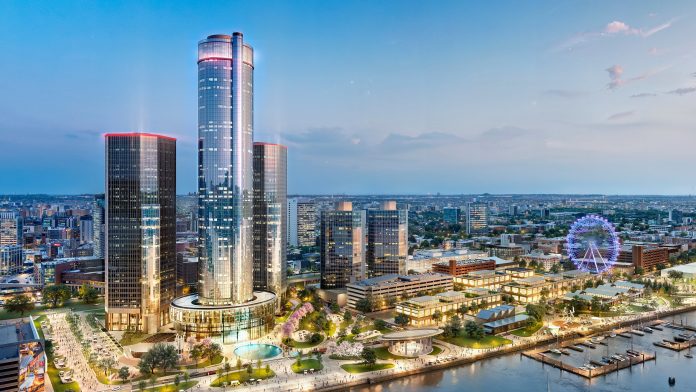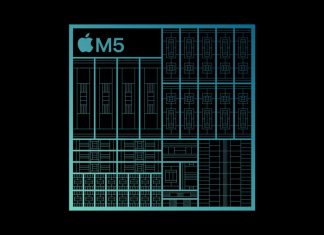Detroit developer Bedrock has announced a new round of funding for a controversial scheme to redevelop the John Portman-designed Renaissance Center, with new renderings of the project.
Bedrock announced that Detroit’s Downtown Development Authority (DDA) had committed $75 million to the project, which will see the demolition of two out of seven skyscrapers in the 1970s complex.
The redevelopment scheme includes demolishing the two skyscrapers closest to the waterfront and reducing the size of the ground-level podium that connects the skyscrapers.
Bedrock said that the project will reactivate what it views as an underutilised site, comparing the potential to other waterfront urban revitalisations in Chicago and New York.

“Bedrock and General Motors’ vision will transform the Renaissance Center from a largely empty, obsolete complex into a vibrant, mixed-use destination – complete with new housing, a revitalized hotel and conference center, activated public spaces, and a publicly accessible observation deck,” said the developer.
“Today’s sea of empty surface lots will give way to the goal of creating the best, family-friendly waterfront district in the nation – Detroit’s own version of Chicago’s Navy Pier or New York City’s Chelsea Piers.”

At the time of its completion, the Renaissance Center was one of the largest private developments in the world, anchored by the central 727-foot-tall (221.5 metres tall) skyscraper
The complex has been used as a headquarters for the automotive company General Motors since 1996, but the company recently announced plans to relocate its operations to the Hudson’s skyscraper in the heart of downtown Detroit.
At the time, General Motors said it might demolish the whole of the Renaissance Center if it did not receive public funds for the redevelopment, which drew outrage from the local community. The plan would have been one of the most extensive skyscraper demolitions in history.
Last year, University of Michigan associate professor of architecture Craig Wilkins told Dezeen that the building’s importance to the city is mostly “symbolic”.
“It’s a structure that people recognize as part of Detroit, to a certain degree,” he said, adding that it is not being used to its full potential. “Renaissance has always been this symbol of possibility, but I’m not sure, sure, [it] has been embraced as a beloved aspect or asset.”
Wilkins echoed other critiques at the time, calling the expectation of public funds “cynical”.
“I can’t see the public benefit for it,” he said. “Detroit doesn’t need any more empty space.”

According to Bedrock, DDA’s contribution to the project will be mostly geared towards the public-facing aspects, “including a new pedestrian promenade from Jefferson Avenue to the riverfront, new public plazas, and new pedestrian and vehicular access to the Renaissance Center and riverfront”.
The funding will also contribute to the demolition of the “notoriously confusing podium […] reversing the flawed historic decision to make the Renaissance Center a fortress-like ‘city within a city'”.
Bedrock has taken part in a number of other redevelopment plans in Detroit, including the 23-building City Modern development.







